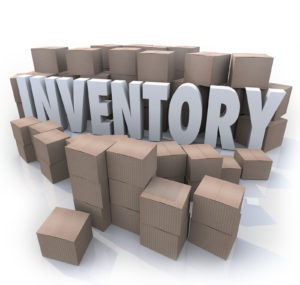 The most fundamental responsibility in a store is managing inventory. This involves obtaining inventory, calculating costs, setting prices, tracking sales and creating efficient reordering and organizing stock processes.
The most fundamental responsibility in a store is managing inventory. This involves obtaining inventory, calculating costs, setting prices, tracking sales and creating efficient reordering and organizing stock processes.
The school store needs supplies. It’s up to you to determine what. Keep in mind that you have to have a reliable source and be able to calculate a reasonable price for whatever you think should be sold. Keep it simple and lean more towards items that will sell as opposed to items that seem novel, interesting and unique.
There are two categories to consider: supplies and food.
Supplies
The school store is essentially a public service. Our goal is to have items on hand that are reasonably priced an appeal to a wide audience. Lean away from sports-themed bobble head pencil toppers and trinkety cartoon character key-chains. Instead, consider practical, useful items that our school community will find convenient to have available on site.
Go to Google Sheets and create a new sheet. Call it “School Store Supplies”. Type the following list as headings across row 1, starting in cell A1: Category, Product Name, Source, Cost, Quantity, Cost/Item, Price, Profit
Type the following categories in the cells listed:
Pencils (cell A2)
Pens (cell A6)
other school supplies (cell A9)
Snacks (cell A15)
Drinks (cell A21)
Your goal is to find a source, calculate costs, and set prices for:
- 3 types of pencils priced at $0.25, $0.50, $1.00
- 2 types of pens priced at $0.50, $1.00
- 5 “other” school supplies
- 5 snack
- 3 drinks
Start by finding products online. On your Google Sheet, type the product names to the right of, and under each category.
- Product names for your pencils will be in cells B3, B4, and B5.
- Product names for your pens will be in cells B7, and B8.
- Product names for your 5 other school supplies will be in cells B10 through B14
- Product names for your snacks will be in cells B16 through B20
- Product names for your drinks will be in cells B22 through B24.
As you find each product, write the name of the website you found it on in the Source column, then insert a link to the actual site. Here’s a quick video on how to do that – How to Link to Your Product. Next, list the cost for the product, and type in the quantity for it. Stop there, and move on to the next product. Complete all 18 products this way, and then we will move on to figuring out the Cost/Item, Price and Profit.
The Cost /Item is calculated by dividing the cost by the number of items. To put it simply, if you buy 4 items for a dollar, then divide $1.00 by 4, you get a Cost/Item of $0.25. Google Sheets (and Microsoft Excel) allow you to do multiple calculations at once using formulas. Formulas always start with the = sign. Click in cell F2 and type =. Look at the Cost and Quantity columns. Remember, you are dividing the cost by the quantity. When using formulas, you simply use the cell reference, not the actual number. In this case, if you’ve done everything according to directions so far, you should be able to type =D2/E2, and then hit enter to get the amount.
Sometimes, a “Suggested autofill” message pops up. Click the green check and your work calculating the cost per item is done.
Now that you know what each item costs, it’s time to set prices. You do this yourself. There is no right or wrong price. You just need to consider the cost, and set the price higher, so you can make a profit, but not so high that people won’t pay that amount because they think they are getting ripped off.
Once you have all the prices set, the final task is to calculate the profit you make by selling one of each item. This process is similar to the cost per item process in that we are going to use a formula. To simplify, if you pay $0.30 for something, that is your cost. If someone wants to buy it, you get to set the price. Let’s say you set the price at $0.50. When you subtract your cost from the price your purchaser paid, you get the profit.
Type =G2-F2 in cell H2 to calculate the profit, hit the green check on the suggested autofill message, and you’re done.
Items to consider for your 5 additional school supplies:
- notebooks
- composition books
- tissues
- locks
- ear buds
- folders
- sharpeners
- book covers
- grippers
- sticky notes
- notecards
- sharpies
- markers
- erasers
- posters
- magnets
Food & Drinks
The second category is food. Snacks can be popular, but kids are picky and investing in something that doesn’t sell results in a loss. It’s fine to consider things that you like, but be sure whatever you pick has universal appeal. Find 5 food items and 3 drinks that you think will be winners for your food list.
- Amazon Smart Snacks
- Smart Snacks Rules
- Smart Snacks Product List
- Healthy Snack Nutrition Calculator
- bars?
- pop-tarts?
- whole grain rice krispy treats?
- yogurt
- fruit cups
- crackers
- whole grain “Atomic Cheez-its”
- chips
- dried fruits
- Zero calorie, non-carbonated beverages (Sobe, Vitamin Water)
- 100% juice
- GM Cereal Bars (Cocoa Puffs, Trix and Cinnamon Toast Crunch)
The following items have been popular in the past and will automatically be available. No need to include them in your list.
- Baked Hot Cheetos
- Skinny Pop
- All the gum
- Zero calorie Powerade
- Fruit 2.0 flavored water
- Smart Water
- Nestle Pure Life water





